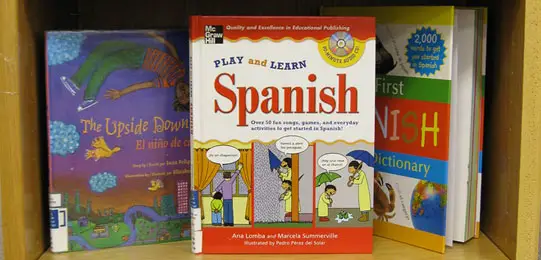
The Basics of Raising a Bilingual Child: Birth through Age 2
Raising bilingual children has many advantages. It can act as a springboard for awareness of other cultures, it promotes reading and writing skills, and it makes it easier to learn other languages later in life. Plus, learning a language as a child is generally considered to be the optimal time, since babies and toddlers are wired to be learning languages.
It’s not always easy to do, however. If the bilingual parent isn’t a native speaker in the second language, it can be a challenge to promote daily interaction. If the language is less common, it can be a lot harder to find resources (for example, Spanish bilingual families have a huge advantage in having standard DVDs with that language on them, TV shows, easily accessible books, and more).
There is also generally a period of time where the child switches or mixes elements of the languages, and sometimes it may feel uncomfortable to use the second language outside of the home. As a mother raising her toddler to be bilingual German/English, as well as a German teacher, I’d like to share some of the tips and resources I’ve found to help decide if bilingualism is the right move for your family, as well as to encourage and support you in this process.
First of all, it’s important that all primary caregivers agree on bilingualism and the method used. Support is key, especially when the challenges listed above arise. Even if not all caregivers speak both languages, they can still be an important part of overall language development.
You also need to decide on your eventual goal, but be willing to be flexible. Do you want basic vocabulary and survival skills, do you want fluent speech, or do you want your child to be able to read and write in both languages as well?
Understand that each child is different and will reach milestones at different times.
You also need to decide on a method, depending on the languages the caregivers speak. There are many options. One is to have one parent speak exclusively in the second language at all times. If both parents speak the second language, you can also decide to have that language spoken at home, and pick up English from the general environment (school, daycare, etc).
You can also set guidelines based on time (daytime/nighttime) and much more – whatever works for your family. If you’d like to, you can try for more than two languages. From what I’ve read, children are capable of three or four languages, as long as they get sufficient regular exposure. So if you have a nanny or au pair that speaks another language, or the option to send your child to an immersion school, if you decide it’s right for your family, then go for it!
It’s also very helpful to make sure your extended family knows your intentions. Mine are very supportive of our decision to do so, and although they feel a little left out when I’m speaking to my daughter in German, they realize that overall it’s a strong benefit, and in general they can figure out the gist of what’s going on.
Finding extra resources in the target language is also helpful. You can search for books at Amazon or other bookstores in your language (you can also try the worldwide Amazon sites for more options, just be prepared to pay extra shipping fees). If there is a language or cultural center nearby, you can also contact them for resources and ideas. You can use language or cultural centers, as well as websites like Meetup, to try to find playdates and activities to increase exposure in the second language.
There are also a great deal of online resources. Some of them are general language-learning websites, and most are geared towards school-age children or teens, but these can be great ways to supplement the language development of older children. Remember that each child is different.
My daughter is not quite two, and is equally verbal in both languages. She has a solid vocabulary, and is starting to be able to separate the two (speaking to me in mostly German and other people in mostly English, but almost always responding in the language she’s spoken to). She is about equal in English to her peers, and equal in German to her English ability.
However, one of my friends is raising a bilingual Romanian-English toddler boy who is a few months older. Although he does not show any major warning signs of language development, he has much more passive development right now. He has about as many words in the two languages put together as the average two year old, and does a great deal of mixing, but is able to understand and respond to both languages.
Resources to help you get started:
Multilingual Children’s Association
Bicultural Family Network
American Speech Language Hearing Association
Bekah writes at Motherhood Moment where she shares times on saving time and money, easy eco-friendly ideas, meal and activity ideas, and much more.